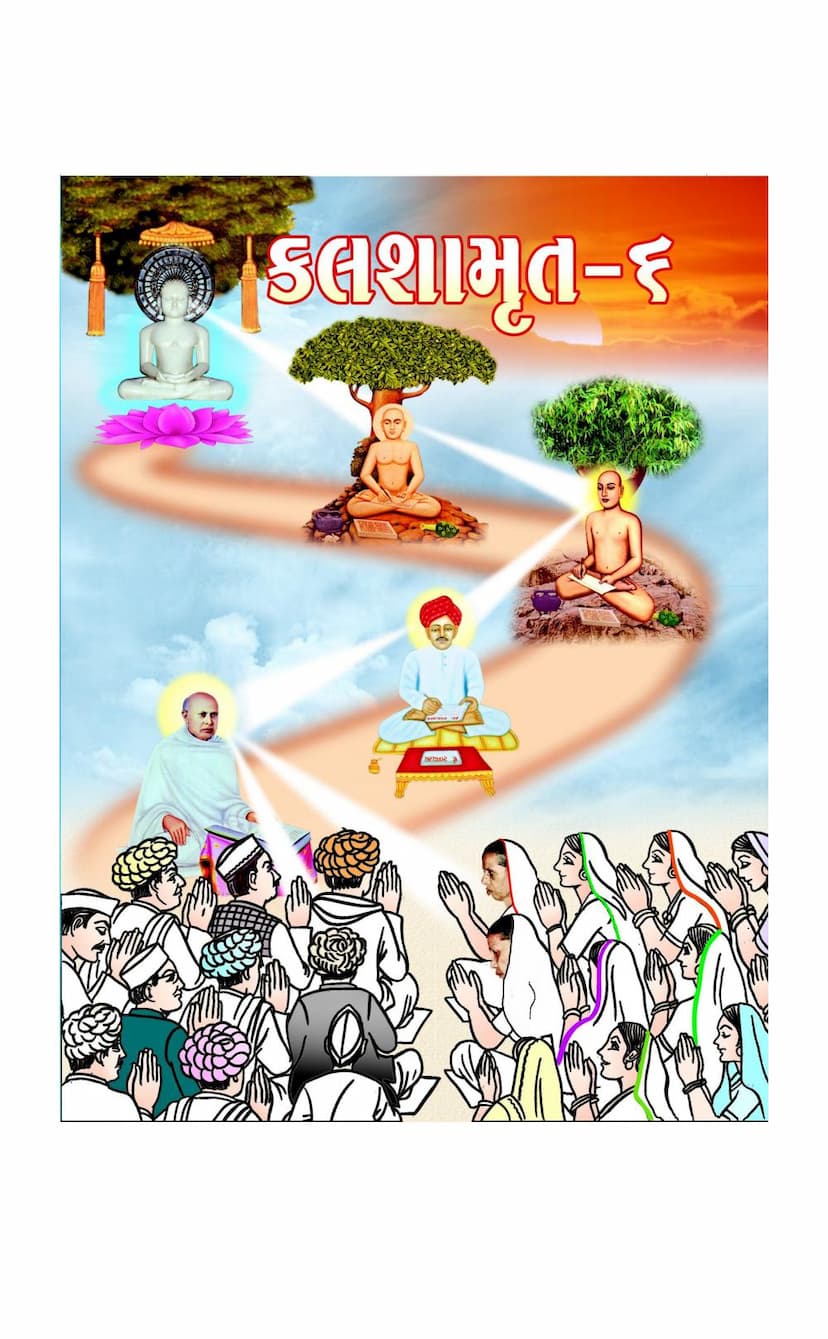Kalashamrut 6
Added to library: September 2, 2025

Summary
This is a summary of "Kalashamrut Part 6," authored by Kanjiswami and published by Digambar Jain Swadhyay Mandir Trust. The text is a collection of profound spiritual discourses by Kanjiswami, originally delivered in Gujarati and then translated into English. The book is a commentary on the "Moksha Adhikar" (Chapter on Liberation) and "Sarva Vishuddha Gnana Adhikar" (Chapter on Pure Omniscience) of the sacred Jain text "Samaysar."
Key Themes and Content:
- Commentary on Samaysar: The book is a detailed explanation of Kanjiswami's realization and understanding of the core principles of Samaysar, particularly focusing on the path to liberation (Moksha) and the nature of pure, all-encompassing knowledge (Sarva Vishuddha Gnana).
- Spiritual Discourses: The content is based on Kanjiswami's spiritual discourses, reflecting his deep personal experience and intuitive grasp of Jain philosophy.
- Focus on the Soul (Atma): The discourses emphasize understanding the true nature of the soul as distinct from the body, karma, and other external or internal non-self entities. The goal is to realize the soul's inherent purity, eternal nature, and its inherent omniscience and bliss.
- Rejection of Ritualism and Externalism: While not explicitly stated in the provided text snippets, Kanjiswami's teachings often highlight the importance of internal realization and self-awareness over mere outward rituals or austerities. The discourses likely delve into how external actions, if not accompanied by the correct internal understanding and spiritual insight, do not lead to liberation.
- The Path to Liberation: The text guides the seeker towards recognizing their true self, the soul, which is described as pure, eternal, and unchanging. This recognition is the key to breaking free from the cycle of birth and death (samsara).
- The Importance of Right Perception (Samyak Darshan): The discourses likely explain the foundational role of Samyak Darshan, or right perception, which involves understanding the soul's true nature and its distinctness from karma and the physical body. This perception is considered the first step towards liberation.
- The Nature of Karma and Liberation: The text would explain how karma, both gross (dravya karma) and subtle (bhava karma), binds the soul and how the realization of the soul's true nature leads to the cessation of karmic influx, ultimately resulting in liberation.
- The Role of Knowledge: The discourses would differentiate between mundane knowledge and the pure, liberating knowledge (Moksha Gnana or Kevala Gnana) that characterizes the soul's inherent nature. The emphasis is on the latter, which is self-manifesting and not dependent on external objects.
Publisher and Context:
- The book is published by the Digambar Jain Swadhyay Mandir Trust in Rajkot, India.
- The online version is made available on the internet by the trust, possibly as part of their effort to disseminate Jain knowledge widely.
- The text mentions the importance of studying scriptures and emphasizes the profoundness of the teachings, urging readers to delve deeply into the meaning of the discourses.
Overall Message:
"Kalashamrut Part 6" serves as a spiritual guide, drawing from Kanjiswami's profound spiritual insights to illuminate the path to self-realization and liberation. It aims to awaken the reader to the eternal, pure, and blissful nature of the soul, guiding them away from attachment to the transient and towards the ultimate truth of their own being. The book is a testament to the power of direct spiritual experience in understanding and conveying the deepest truths of Jainism.